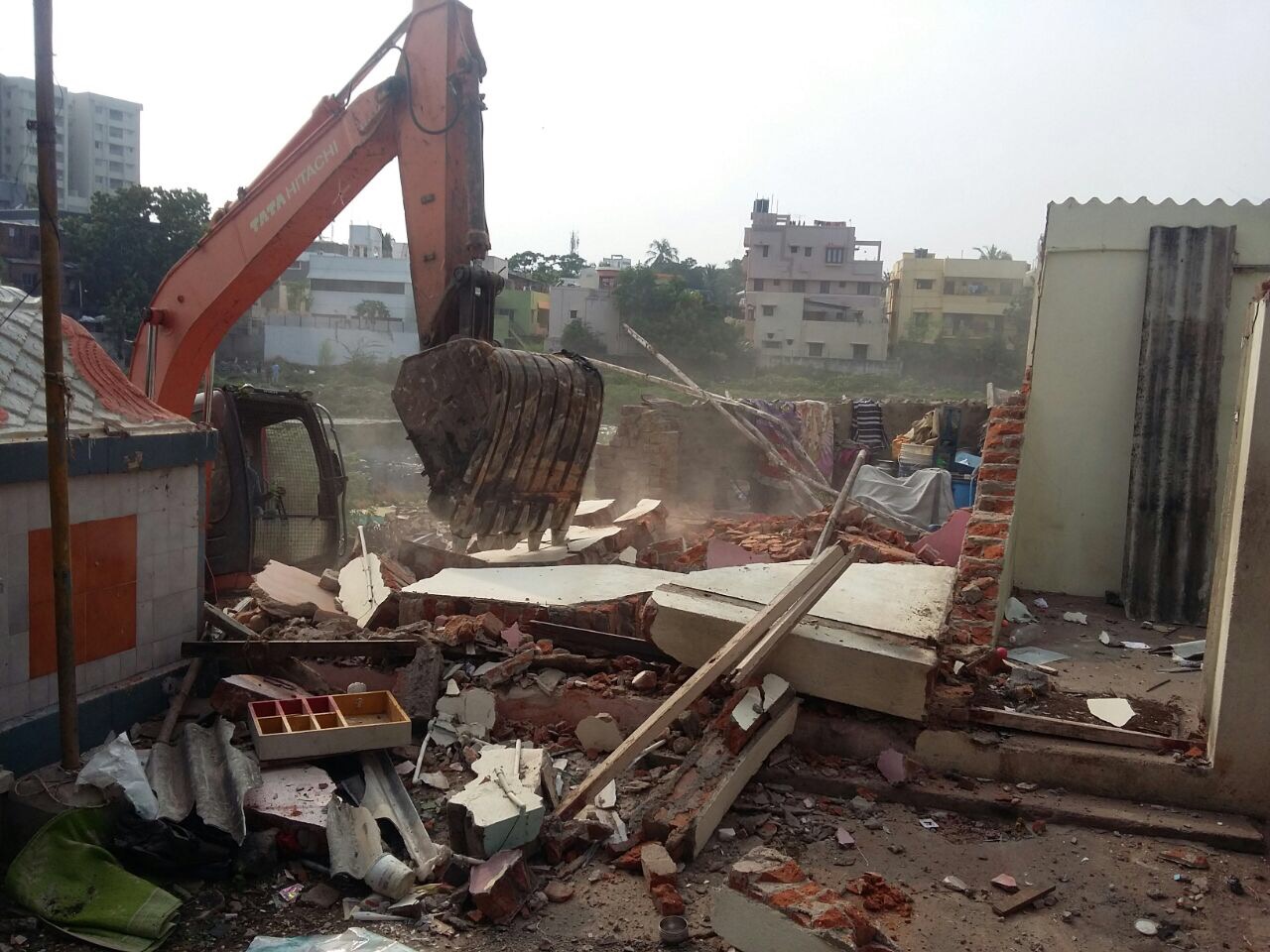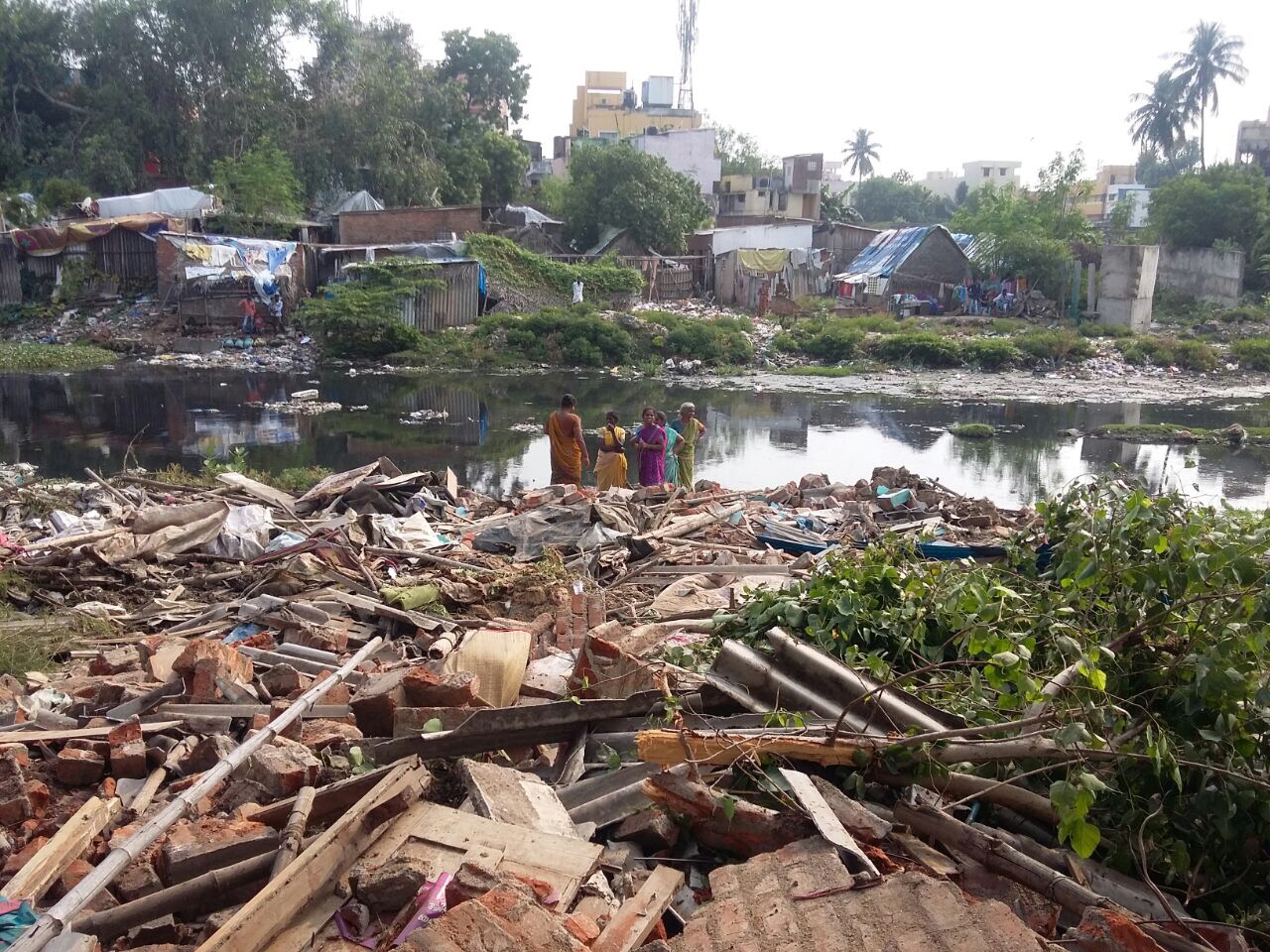
With 2 lakh people displaced in 2018, forced evictions a national crisis

There is a rampant issue of forced evictions happening across the country, with as many as 2,00,000 persons evicted in India in 2018, according to a report released on April 9 in New Delhi.
Forced evictions, as defined by the United Nations Committee on the Economic, Social and Cultural Rights, is the ‘permanent or temporary removal against the will of individuals, families or communities from their homes or land, which they occupy, without the provision of, and access to, appropriate forms of legal or other protection.’ The reports ‘Forced Evictions in India in 2018: An Unabating National Crisis; and, Adjudicating the Human Right to Adequate Housing: Analysis of Important Judgments from Indian High Courts’ by the Housing and Land Rights Network India pointed out how as many as 114 houses were demolished every day and 23 people evicted every hour in 2018.
Among the cities, Chennai saw as many as 15,000 people evicted from over 30 settlements on the banks of the Adyar and Cooum rivers. The state has only targeted homes and small enterprises and shops of the urban poor and not cleared large commercial establishments along the water bodies. While most of the affected families have been provided alternative housing in the resettlement sites of Perumbakkam, Gudapakkam, and Navalur, these sites are situated on low-lying, flood-prone areas, thus bringing into question the rationale of disaster protection, for which, allegedly, they have been relocated.

Talking to The Federal, Vanessa Peter, policy researcher, Information and Resource Centre for the Deprived Urban Communities, Chennai, who also presented the cases in the city as part of the report, said that no assessment has been done by the government to ascertain the socio impact of the evictions. She added, “They have no records about the women or children affected by these evictions. Some of the children who were evicted from places like Chintadripet to Perumbakkam travel almost 40 kilometres as the eviction was in the middle of the academic year. There are clear guidelines from the United Nations and these have been ignored by authorities.”
The report presented cases from New Delhi, Gurugram, Prayagraj, Vadodara, Bhopal, Navi Mumbai, Bhubaneswar, Coimbatore, among other cities in the country. The evictions can be classified under broadly four categories. These include Slum-clearance or anti-encroachment or city-beautification” drives, including for mega events, and interventions aimed at creating slum-free cities [47% of affected persons], infrastructure or development projects (26%), environmental projects, forest protection, and wildlife conservation [20% of affected persons] and disaster management [8% of affected persons]. The report noted that evictions in 2018 were not carried out for “exceptional circumstances” as stipulated by the UN Basic Principles and Guidelines on Development-based Evictions and Displacement (2007), which are the global operational human rights standards to be complied with by state and non-state actors before, during, and after any proposed eviction.
Peter pointed out that 71,000 families in Chennai stood at the risk of being evicted, while in the country there are 11. 3 million people are at the risk of being evicted.
The report also noted that it is ironic that there have been so many forced evictions, despite the central government’s Pradhan Mantri Awas Yojana (PMAY) or ‘Housing for All–2022’ scheme and other state government housing programmes. The programme claims to focus on the provision of housing for marginalized and low-income populations in urban and rural areas.

